
Florins – the first Czech gold coins celebrate 700 years with a postage stamp
Sberatel.info
3. April, 2025
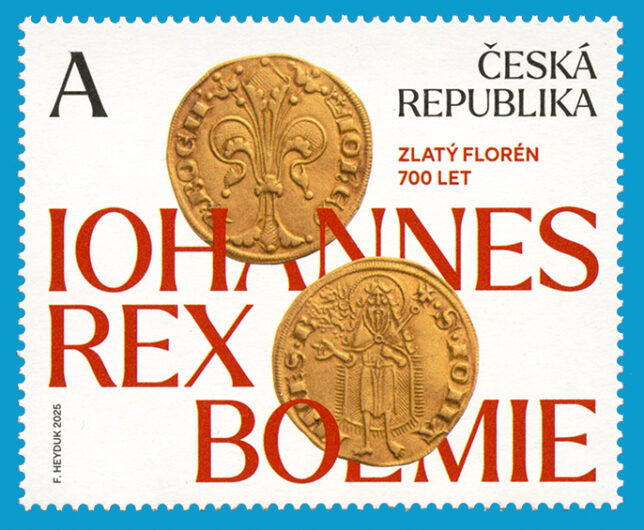
Two stamps of interest to philatelists and numismatists have been issued by the Czech Post. They commemorate 700 years since the start of the minting of the gold florin and 725 years of the Prague groschen.
Stamps depict both sides of the coins with Latin text referring to the text of the respective coin. The author of the issue, artist Filip Heyduk, was inspired by collection items borrowed from the National Museum. The depicted florin dates back to the reign of Wenceslas II, while the Prague groschen dates back to the reign of John of Luxembourg.
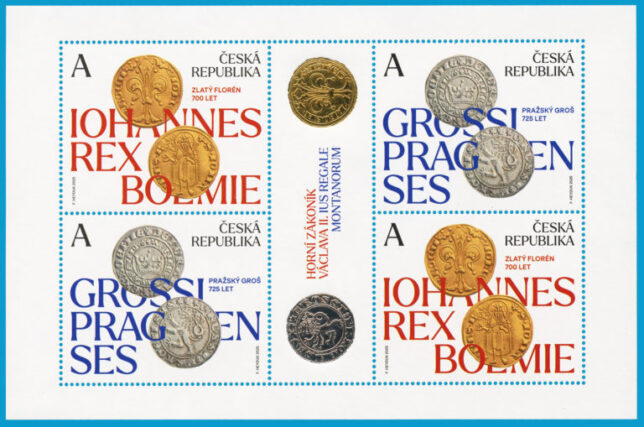
With the development of trade in the 13th century, there was a growing need for high-quality currency in Europe. At that time, the Czech lands were especially known for their rich silver deposits and a strong silver currency, the Prague groschen, which was minted by King Wenceslas II of Bohemia in 1300.
The second strong royal dynasty after the Přemyslids, the Luxembourgers, who ruled the Czech lands from 1310 to 1437, then took care of the minting of the gold coin, which put the countries of the Bohemian kingdom at the top of Europe. 700 years ago, on January 3, 1325, the mint in Prague started minting the first Czech gold coins called florins. They were minted as the highest coinage unit by the Czech King John of Luxembourg (or John the Blind), who was inspired by Florence, where the “floren d’oro” was first minted in 1252. Prague thus became the first city north of the Alps to produce a gold coin.
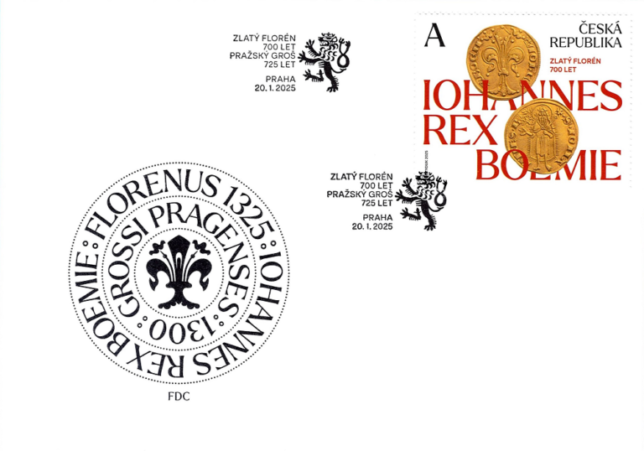
This was the first time that an original portrait coin appeared in Central Europe. The reverse depicts a Czech lion. The royal and imperial ducats differ only in the crown.
The Bohemian florin weighed 3.53 grams and was made of 990/1000 gold. As gold was scarce in Bohemia, the silver Prague groschen remained the most commonly used payment currency. One florin was equal to 16 groschen in the first half of the 14th century. The Prague grosch was discontinued in 1547 by Ferdinand I, who replaced it with the silver tolar.

Thanks to the controlled amount of gold, ducats remained a reliable currency for centuries after the Luxembourgers. The minting of ducats (formerly called florins) was stopped in the Czech lands in January 1856.

The crown (koruna), which became the currency of the then Habsburg monarchy in 1892, was also based on gold. However, only coins of higher value were made of gold. The names crown and penny for small coins were adopted by the successor states after the dissolution of the monarchy in 1918. The Czech crown as it is today has been used since the division of Czechoslovakia and the monetary separation in February 1993.
jj, photo: Czech Post

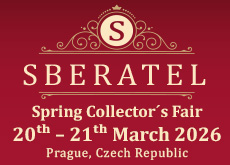
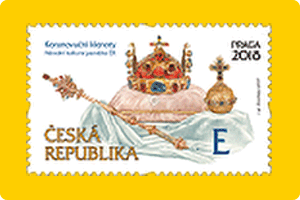
 COLLECTORS’ AUCTIONS
COLLECTORS’ AUCTIONS

